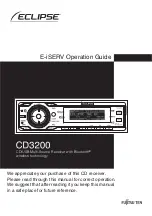
AR402 Administration
14
4.2 Basics
The AR402 is manufactured in two versions:
1. AR402 with built-in biometrical sensor and keypad
2. AR402-Card Reader with built-in biometrical sensor and embedded smart card
reader
The AR402 identifies authorized
users by scanning their fingerprints (and optionally their
PINs and smart cards). Successful identification sends a trigger signal to an access
controller within a protected area and is followed by a door lock or release.
The AR402-Card Reader reads fingerprints and smart cards alternatively.
Fingerprint authentication requires that the authorized user's fingerprints have been enrolled
in advance and that they have been linked to a unique User ID.
Enrollment can be performed on the AR402, which stores the collected data (Templates).
The 'Template on Card' mode allows you to write Templates onto smart cards (currently
16k2 cards only).
The AR402 can either be run using the RS485 interface or the Wiegand output:
RS485 Configuration
Running the reader using the RS485 interface means that
administration of the AR402 is done on the NEXTOR Series
access controller.
All administrator functions, except for enrollment, are disabled
on the AR402.
Fingerprint Templates are managed by the access controller
and can be distributed to the connected AR402 readers.
Wiegand Configuration
All administrator functions described in this manual, except for
enrollment, only apply to the Wiegand configuration. All settings
are entered on the keypad of the AR402.
Fingerprint templates are stored on the AR402 and cannot be
distributed to connected AR402 readers.
4.3
Basic Operating Principles
General
Pressing any key triggers a beep.
Release
Beep tone and all LEDs flashing green
Green and Red / Green LEDs
Guides an administrator through the setup menus
Red LEDs and Beeps
Generally indicates an error
Error Message
3 short beeps and all LEDs flashing red 3 times indicate an error.
The desired function was not performed.
3x Key "#"
Press "#" three times to reset the reader to keypad default state after typing
errors or wait for timeout (10-30 seconds, depending on status) to return to the default
position.















































